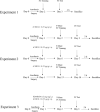Recombinant chitinase-3-like protein 1 alleviates learning and memory impairments via M2 microglia polarization in postoperative cognitive dysfunction mice
- PMID: 38993135
- PMCID: PMC11801278
- DOI: 10.4103/NRR.NRR-D-23-01233
Recombinant chitinase-3-like protein 1 alleviates learning and memory impairments via M2 microglia polarization in postoperative cognitive dysfunction mice
Abstract
JOURNAL/nrgr/04.03/01300535-202509000-00032/figure1/v/2024-11-05T132919Z/r/image-tiff Postoperative cognitive dysfunction is a severe complication of the central nervous system that occurs after anesthesia and surgery, and has received attention for its high incidence and effect on the quality of life of patients. To date, there are no viable treatment options for postoperative cognitive dysfunction. The identification of postoperative cognitive dysfunction hub genes could provide new research directions and therapeutic targets for future research. To identify the signaling mechanisms contributing to postoperative cognitive dysfunction, we first conducted Gene Ontology and Kyoto Encyclopedia of Genes and Genomes pathway enrichment analyses of the Gene Expression Omnibus GSE95426 dataset, which consists of mRNAs and long non-coding RNAs differentially expressed in mouse hippocampus 3 days after tibial fracture. The dataset was enriched in genes associated with the biological process "regulation of immune cells," of which Chil1 was identified as a hub gene. Therefore, we investigated the contribution of chitinase-3-like protein 1 protein expression changes to postoperative cognitive dysfunction in the mouse model of tibial fracture surgery. Mice were intraperitoneally injected with vehicle or recombinant chitinase-3-like protein 1 24 hours post-surgery, and the injection groups were compared with untreated control mice for learning and memory capacities using the Y-maze and fear conditioning tests. In addition, protein expression levels of proinflammatory factors (interleukin-1β and inducible nitric oxide synthase), M2-type macrophage markers (CD206 and arginase-1), and cognition-related proteins (brain-derived neurotropic factor and phosphorylated NMDA receptor subunit NR2B) were measured in hippocampus by western blotting. Treatment with recombinant chitinase-3-like protein 1 prevented surgery-induced cognitive impairment, downregulated interleukin-1β and nducible nitric oxide synthase expression, and upregulated CD206, arginase-1, pNR2B, and brain-derived neurotropic factor expression compared with vehicle treatment. Intraperitoneal administration of the specific ERK inhibitor PD98059 diminished the effects of recombinant chitinase-3-like protein 1. Collectively, our findings suggest that recombinant chitinase-3-like protein 1 ameliorates surgery-induced cognitive decline by attenuating neuroinflammation via M2 microglial polarization in the hippocampus. Therefore, recombinant chitinase-3-like protein 1 may have therapeutic potential for postoperative cognitive dysfunction.
Copyright © 2025 Copyright: © 2025 Neural Regeneration Research.
Conflict of interest statement
Figures





Similar articles
-
Protective effects of the salt-induced kinase inhibitor HG-9-91-01 on sepsis-associated cognitive dysfunction in mice and the underlying mechanisms.Zhong Nan Da Xue Xue Bao Yi Xue Ban. 2023 Dec 28;48(12):1793-1803. doi: 10.11817/j.issn.1672-7347.2023.230208. Zhong Nan Da Xue Xue Bao Yi Xue Ban. 2023. PMID: 38448372 Free PMC article. Chinese, English.
-
Maresin 1 alleviates neuroinflammation and cognitive decline in a mouse model of cecal ligation and puncture.Zhong Nan Da Xue Xue Bao Yi Xue Ban. 2024 Jun 28;49(6):890-902. doi: 10.11817/j.issn.1672-7347.2024.240117. Zhong Nan Da Xue Xue Bao Yi Xue Ban. 2024. PMID: 39311785 Free PMC article.
-
CHF5074 (CSP-1103) induces microglia alternative activation in plaque-free Tg2576 mice and primary glial cultures exposed to beta-amyloid.Neuroscience. 2015 Aug 27;302:112-20. doi: 10.1016/j.neuroscience.2014.10.029. Epub 2014 Oct 22. Neuroscience. 2015. PMID: 25450955
-
MicroRNA-181b-5p attenuates early postoperative cognitive dysfunction by suppressing hippocampal neuroinflammation in mice.Cytokine. 2019 Aug;120:41-53. doi: 10.1016/j.cyto.2019.04.005. Epub 2019 Apr 16. Cytokine. 2019. PMID: 31003188
-
Perioperative use of cefazolin ameliorates postoperative cognitive dysfunction but induces gut inflammation in mice.J Neuroinflammation. 2018 Aug 22;15(1):235. doi: 10.1186/s12974-018-1274-6. J Neuroinflammation. 2018. PMID: 30134985 Free PMC article.
Cited by
-
Chitinase-3-like-1: a multifaceted player in neuroinflammation and degenerative pathologies with therapeutic implications.Mol Neurodegener. 2025 Jan 18;20(1):7. doi: 10.1186/s13024-025-00801-8. Mol Neurodegener. 2025. PMID: 39827337 Free PMC article. Review.
-
Bibliometric Analysis of Neuroinflammation and Postoperative Cognitive Dysfunction.Brain Behav. 2025 Jan;15(1):e70271. doi: 10.1002/brb3.70271. Brain Behav. 2025. PMID: 39789906 Free PMC article.
References
-
- Chain B. agilp: Agilent expression array processing package. R package version 3.28.0 2022
-
- Chen Y, Dong J, Gong L, Hong Y, Hu C, Bao Y, Chen H, Liu L, Huang L, Zhao Y, Zhang J, He S, Yan X, Wu X, Cui W. Fucoxanthin, a marine derived carotenoid, attenuates surgery-induced cognitive impairments via activating Akt and ERK pathways in aged mice. Phytomedicine. 2023;120:155043. - PubMed
LinkOut - more resources
Full Text Sources
Research Materials
Miscellaneous

